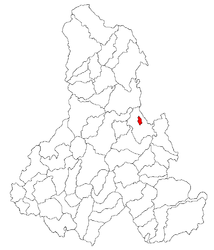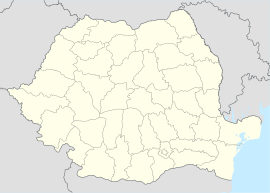
Brad is a city in Hunedoara County in the Transylvania region of Romania. Its name comes from the Romanian word brad, "fir".
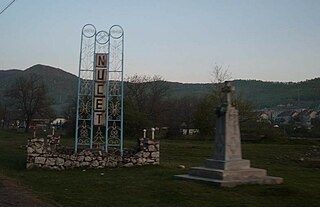
Nucet is a town in Bihor County, western Transylvania, Romania. Its name means "walnut trees" both in Romanian and Hungarian. It administers two villages, Băița (Rézbánya) and Băița-Plai.
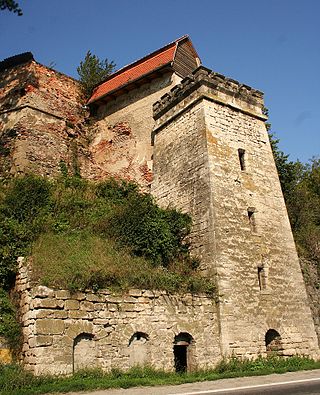
Boița is a commune in Sibiu County, Transylvania, Romania, at the foothills of the Cindrel Mountains, 22 km (14 mi) south of the county capital Sibiu, in the Mărginimea Sibiului ethnographic area, on the main road between Sibiu and the southern part of Romania, the National road 7/European route 81, at the entrance of the Olt River defile. The commune is composed of four villages: Boița, Lazaret, Lotrioara (Latorvár), and Paltin. These were part of Tălmaciu town until 2004, when they were split off.

Bod is a commune in Brașov County, Transylvania, Romania. It is composed of two villages, Bod and Colonia Bod.
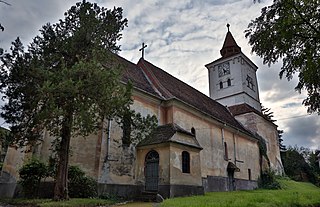
Măieruș is a commune in Brașov County, Transylvania, Romania. It is composed of two villages, Arini (Lüget) and Măieruș. The settlement was mentioned for the first time in 1377 as "villa nucum".

Drăguș is a commune in Brașov County, Transylvania, Romania. It is composed of a single village, Drăguș, part of Viștea Commune until being split off in 2004.

Bixad is a commune in Covasna County, Transylvania, Romania. Composed of a single village, Bixad, it was joined to Malnaș in 1968. It once again became an independent commune when it split off in 2004. It lies in the Székely Land, an ethno-cultural region in eastern Transylvania.

Bodoc is a commune in Covasna County, Transylvania, Romania composed of three villages: Bodoc, Olteni (Oltszem), and Zălan (Zalán).

Hăghig is a commune in Covasna County, Transylvania, Romania composed of two villages: Hăghig and Iarăș (Nyáraspatak).

Vâlcele is a commune in Covasna County, Transylvania, Romania composed of four villages: Araci, Ariușd (Erősd), Hetea (Hetye), and Vâlcele.

Sărățeni is a commune in Mureș County, Transylvania, Romania. It became an independent commune when it split from the town of Sovata in 2004. It is composed of a single village, Sărățeni.

Vătava is a commune in Mureș County, Transylvania, Romania composed of three villages: Dumbrava (Marosliget), Râpa de Jos (Alsórépa), and Vătava.

Apața is a commune in Brașov County, Romania. It is composed of a single village, Apața. It is situated in the traditional region of Transylvania.

Beclean is a commune in Brașov County, Transylvania, Romania. It is composed of five villages: Beclean, Boholț, Calbor, Hurez (Huréz), and Luța (Luca).

Ormeniș is a commune in Brașov County, Transylvania, Romania. It is composed of a single village, Ormeniș. It also included the village of Augustin until 2005, when that village was split off to form a separate commune.

Racoș is a commune in Brașov County, Transylvania, Romania. It is composed of two villages, Mateiaș (Mátéfalva) and Racoș.

Șinca is a commune in Brașov County, Transylvania, Romania. It is composed of six villages: Bucium (Bucsum), Ohaba (Ohába), Perșani (Persány), Șercăița (Sarkaica), Șinca Veche, and Vâlcea (Valcsatelep).

Șinca Nouă is a commune in Brașov County, Transylvania, Romania. It is composed of two villages, Paltin and Șinca Nouă, and also administers a hamlet, Strâmba.

Ungra is a commune in Brașov County, Transylvania, Romania. It is composed of two villages, Dăișoara and Ungra.

Ucea is a commune in Brașov County, Transylvania, Romania. It is composed of four villages: Corbi (Korb), Feldioara (Barcaföldvár), Ucea de Jos, and Ucea de Sus (Felsőucsa).

